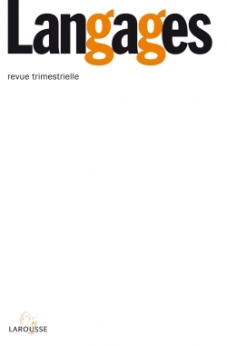
Langages n° 191 (3/2013)
Pour acheter ce numéro, contactez-nous
Recevez les numéros de l'année en cours et accédez à l'intégralité des articles en ligne.
La « concordance des temps » est-elle autre chose en français qu’un souvenir de la grammaire latine ? Selon Brunot (1922), le chapitre entier se réduirait à une ligne : « Il n’y en a pas ». Or, les grammairiens du français langue maternelle ou du français langue étrangère lui consacrent toujours des développements parfois importants. Le but du présent article est de montrer qu’une série d’hypothèques pèsent sur les discussions, à savoir 1) le métalangage, 2) la conception des modes, 3) la temporalité du subjonctif, 4) le discours rapporté. Après avoir répertorié les combinaisons possibles, les auteurs concluent à l’absence de contraintes temporelles du verbe matriciel sur le verbe sous-phrastique, mais n’en relèvent pas moins deux circonstances où le premier impose au second un comportement différent de ce qu’il serait en phrase simple.
Is the “sequence of tenses” in French anything but a mere reminescence of Latin grammar ? According to Brunot (1922), the whole chapter could be reduced to one sentence : “There is none”. Yet grammarians of French, whether native or non-native, keep devoting substantial developments to the issue. This paper seeks to show that the discussion has been hindered by several problems: 1) metalanguage, 2) conception of moods, 3) temporality of the subjunctive, 4) reported speech. After enumerating the different potential combinations, the authors conclude that there are no temporal constraints from the verb of the main clause acting upon the subordinate verb, but they nevertheless highlight two circumstances where the former verb entails in the latter a behaviour different from that which would appear in simple sentences.

